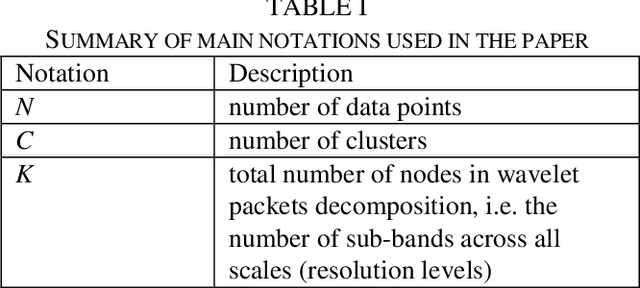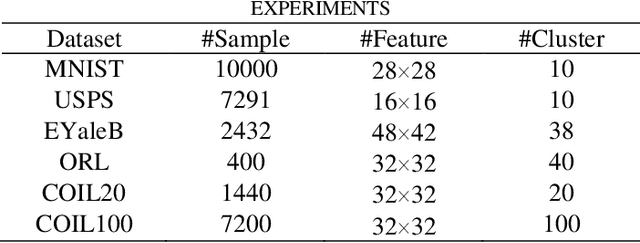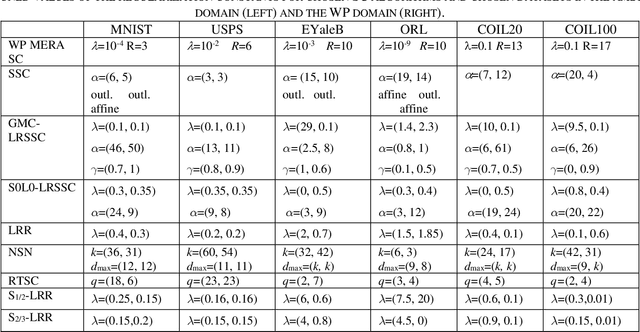Damir Sersic
Subspace Clustering in Wavelet Packets Domain
Jun 06, 2024



Abstract:Subspace clustering (SC) algorithms utilize the union of subspaces model to cluster data points according to the subspaces from which they are drawn. To better address separability of subspaces and robustness to noise we propose a wavelet packet (WP) based transform domain subspace clustering. Depending on the number of resolution levels, WP yields several representations instantiated in terms of subbands. The first approach combines original and subband data into one complementary multi-view representation. Afterward, we formulate joint representation learning as a low-rank MERA tensor network approximation problem. That is motivated by the strong representation power of the MERA network to capture complex intra/inter-view dependencies in corresponding self-representation tensor. In the second approach, we use a self-stopping computationally efficient method to select the subband with the smallest clustering error on the validation set. When existing SC algorithms are applied to the chosen subband, their performance is expected to improve. Consequently, both approaches enable the re-use of SC algorithms developed so far. Improved clustering performance is due to the dual nature of subbands as representations and filters, which is essential for noise suppression. We exemplify the proposed WP domain approach to SC on the MERA tensor network and eight other well-known linear SC algorithms using six well-known image datasets representing faces, digits, and objects. Although WP domain-based SC is a linear method, it achieved clustering performance comparable with some best deep SC algorithms and outperformed many other deep SC algorithms by a significant margin. That is in particular case for the WP MERA SC algorithm. On the COIL100 dataset, it achieves an accuracy of 87.45% and outperforms the best deep SC competitor in the amount of 14.75%.
 Add to Chrome
Add to Chrome Add to Firefox
Add to Firefox Add to Edge
Add to Edge